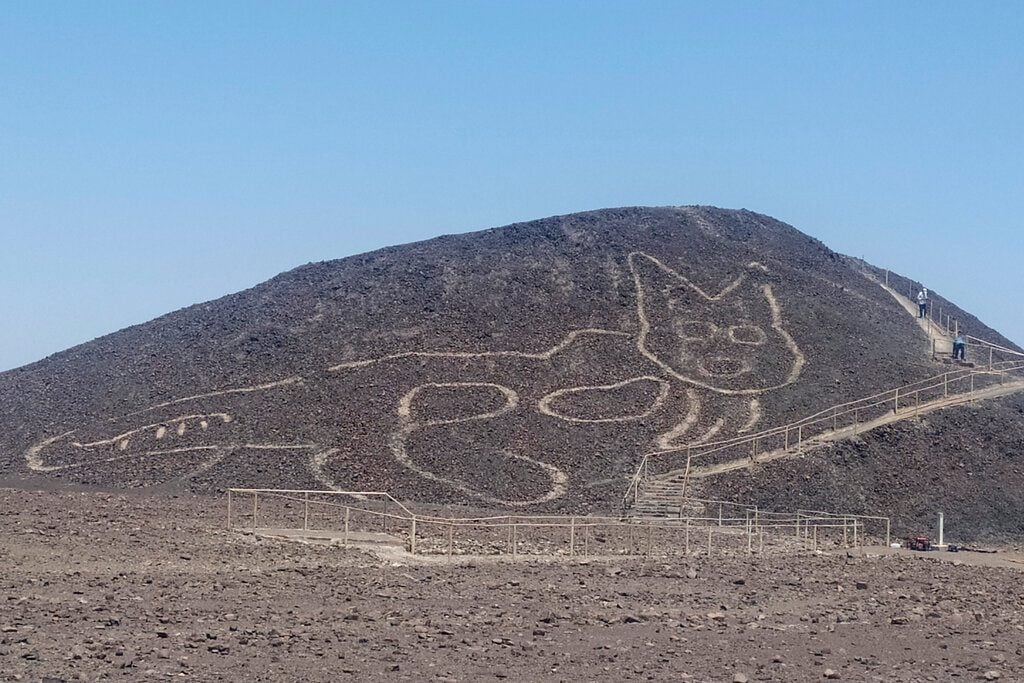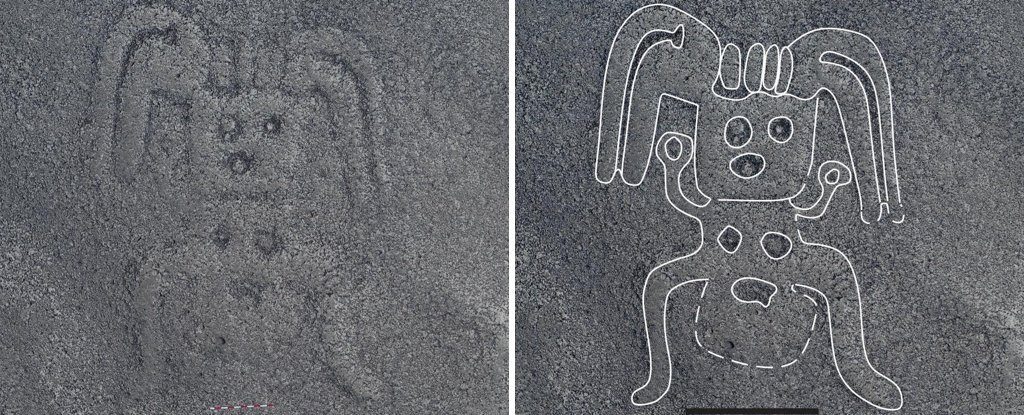Art World
Scientists Uncovered a Cartoonish, 2,000-Year-Old Cat Figure Etched Into the Earth Among Peru’s Nazca Lines
The feline figure is in the process of being conserved now.

The feline figure is in the process of being conserved now.

Caroline Goldstein

A new figure has been found among Peru’s famed Nazca Lines, a group of geoglyphs etched into the soil of the 800-mile Nazca Desert.
A 120-foot cat-like figure was discovered etched in the landscape last week, the country’s culture ministry confirmed. It dates to around 200 BC–100 BC, making it older than any of the other prehistoric images at the site.
Researchers stumbled upon the figure, which resembles a lounging feline with a striped tail and pointy ears, while doing conservation work at the rocky hill known as Mirador Natural. “The figure was barely visible and was about to disappear due to its location on a fairly steep slope and the effects of natural erosion,” said a statement from the ministry.
Peruvian archaeologist Toribio Mejia Xesspe discovered the Nazca Lines in 1927 and UNESCO designated them a World Heritage Site in 1994. Like many prehistoric drawings, the Nazca Line images depict a range of animals including a spider, monkey, hummingbird, whale, and fish; there are also humanoid images.

A humanoid figure with what appears to be a face in their midsection from the newly uncovered cache of Nazca Lines.
As technology continues to advance, more prehistoric images are being discovered in Peru. In 2019, researchers at the Yamagata University in Japan, in collaboration with IBM Japan, announced newly uncovered Nazca Lines. The archaeologists were able to use artificial-intelligence technology to enhance visuals of 143 line drawings, revealing outlines of living and mythical creatures, including a two-headed serpent and an angular bird-like animal.
The use and meaning of the Nazca Lines has been debated for decades, with many historians believing the geoglyphs served religious and ritual functions, perhaps pertaining to astrology. According to UNESCO’s description: “The concentration and juxtaposition of the lines, as well as their cultural continuity, demonstrate that this was an important and long-lasting activity, lasting approximately one thousand years.”